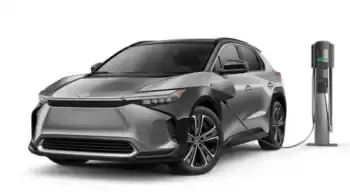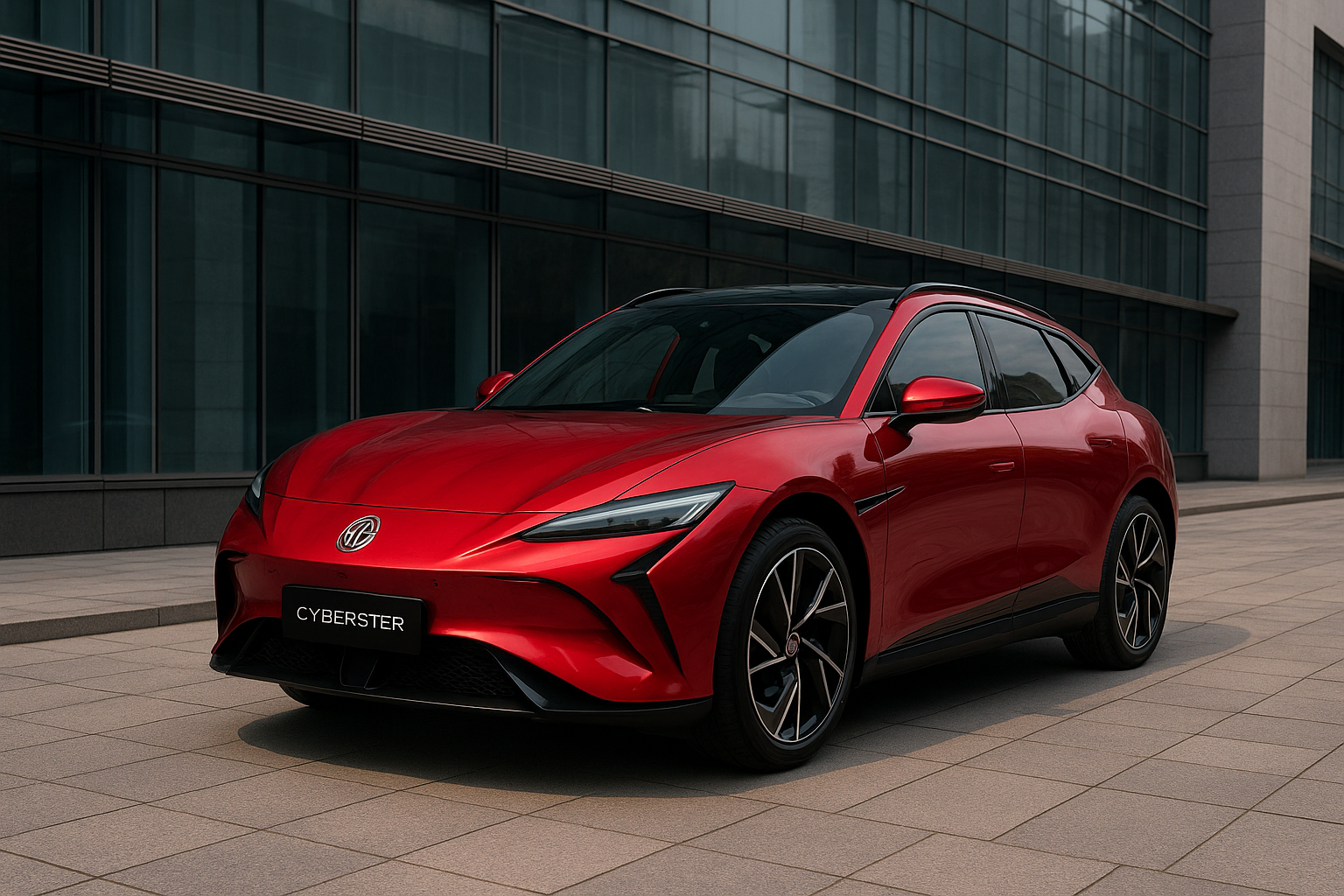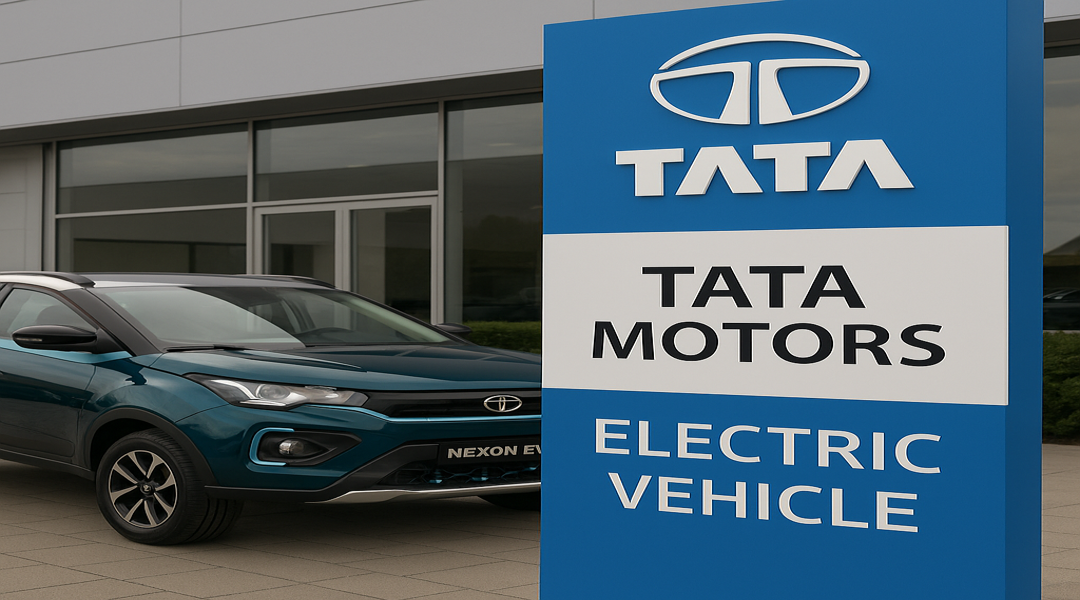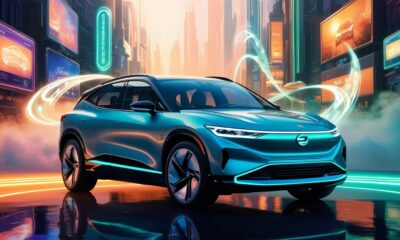EV news
A Tesla Killer in the making: Toyota to unleash 9 EVs in Europe by 2026

Toyota has long taken a cautious approach to fully electric vehicles, choosing instead to focus on hybrid technology. Despite fluctuations in the global EV market, the company has been able to maintain strong sales thanks to this strategy. However, Toyota has now revealed plans to introduce nine new fully electric vehicles in Europe by 2026, marking a significant shift in strategy. This move marks a major step forward for the company as it expands its EV portfolio in a region that has rapidly embraced electric mobility.
A mix of Toyota and Lexus models will make up the lineup of the upcoming electric vehicle lineup. In 2025, Toyota intends to introduce three electric vehicles: the bZ4X, Urban Cruiser, and C-HR+. Three additional models of these vehicles will be released the following year. Additionally, Lexus will contribute to the expansion with the launch of the new RZ SUV, bringing the total number of fully electric vehicles from Toyota and Lexus to nine by the end of 2026.
This strategy has helped Toyota weather shifts in demand that have affected the market as a whole, even though the company has been cautious about going all-in on EVs. Over the past few years, global EV sales have experienced both rapid growth and periods of stagnation. Toyota consistently saw demand for its hybrid lineup, whereas some manufacturers struggled with declining sales of battery-electric vehicles. This consistent performance was especially evident in major markets like the United States, where consumers looking for an efficient and practical alternative to fully electric vehicles continued to favor hybrids.
In its effort to achieve carbon neutrality, Toyota maintains its commitment to a diverse strategy. The company has stated that, depending on the needs of the market and the development of infrastructure, it will adapt its strategy to various regions. Europe, for example, has seen strong EV adoption, with government policies and incentives driving consumer interest in electric vehicles. As a result, it makes sense to launch a number of new electric vehicle models in the region. In contrast, Toyota intends to concentrate on hybrid models as a more viable option in markets where EV penetration remains low, such as South Africa.
Toyota is looking into expanding its electric vehicle offerings in other important markets in addition to Europe. One such market is India, where the company currently does not have a fully electric model available. Instead, Toyota has built a strong presence with its hybrid vehicles, including the Hyryder, Hycross, and the Camry. Customers in India have been pleased with these models, which share hybrid technology with Maruti Suzuki.
Toyota is anticipated to launch its own electric vehicle in the Indian market in the near future, as Maruti Suzuki prepares to enter the all-electric vehicle market with the eVitara. The company’s strategy strikes a delicate balance between responding to consumers’ growing interest in electric vehicles and preserving its strong position in hybrid technology. As the automotive industry moves toward an electric future, Toyota appears to be positioning itself to compete more aggressively in the EV space without abandoning the hybrid models that have been a key part of its success.
Industry observers are keeping a close eye on how this strategy will play out in the years to come as Toyota gets ready to introduce its new electric lineup. Established brands like Tesla, Volkswagen, and Hyundai are leading the charge in the electric vehicle (EV) market in Europe. Toyota’s decision to introduce nine electric models in the region signals that it is ready to compete at a much larger scale than before.
In the meantime, it’s unclear how Toyota’s global EV strategy will change after 2026. The business has stated that it will expand its electric offerings, but it has not completely abandoned hybrid and fuel cell technology. Instead, it is taking a measured approach, introducing EVs in markets where they make the most sense and continuing to develop alternative powertrains for regions where hybrids continue to be preferred by infrastructure and consumer preferences.
As the automotive industry undergoes a transformative shift toward electrification, Toyota’s expanding EV lineup represents a significant evolution in its strategy. The coming years will determine how well the company’s approach positions it in an increasingly competitive market. With Europe serving as a major testing ground for its electric ambitions, the success of Toyota’s new EVs could play a crucial role in shaping the future of the company’s global operations.
Article By
Sourabh Gupta
Blog
MG’s Cyberster: India’s Upcoming Premium Electric SUV Set to Launch in July 2025

A Bold Step Into India’s Luxury EV Market
So, MG is about to bring out something pretty cool — the Cyberster, a premium electric SUV, expected to launch around July 2025. It’s their way of stepping up in India’s electric vehicle game and offering something that’s not just green, but also stylish and packed with tech.
EVs are getting popular here, and MG wants to be part of that wave, especially for folks who want a good-looking, comfy ride that’s loaded with modern features.
Striking Design Meets Cutting-Edge Technology
We don’t have all the info yet, but the Cyberster looks sharp. Think sleek and sporty, something that’ll catch eyes on the road.
Inside, expect lots of screens, smart features, and safety tech — basically, everything you’d want to make your drive smooth and fun. Whether it’s a quick city run or a weekend escape, this car’s aiming to make every trip enjoyable.
Performance That Packs a Punch
If you’re paying for a premium electric SUV, you want it to perform, right? While details are still under wraps, MG usually doesn’t disappoint. Expect a good driving range and enough power to make driving fun.
And with fast charging, you won’t be stuck waiting around forever — a big plus for busy folks.
What the Cyberster Means for Indian Consumers
This car means more choice for buyers who want a premium EV. The market is heating up, and it’s great because it gives you options that fit your style and budget.
MG is known for giving good value, so this might be a premium ride without the crazy premium price tag.
Growing Competition: A Win for Buyers
More companies entering the EV space means the competition’s getting fierce — Tata, Mahindra, Hyundai, and now MG all want your attention.
That means better cars, better prices, and more charging stations popping up, making EVs easier to own.
MG’s Vision for India’s EV Future
The Cyberster is just the start for MG. They’re clearly aiming to be a big player in India’s EV scene by giving buyers stylish, tech-packed cars.
As India moves toward greener transport, cars like this will help make electric vehicles the new normal.
Article By
Sourabh Gupta
Blog
India’s EV Market Heats: More Players, More Competition

The Electric Vehicle Battle Is Just Getting Started
You know how things are changing fast with electric vehicles here in India? Well, it’s no longer just a couple of companies in the game. Tata and Mahindra have been leading for a while, but now Maruti, Toyota, and Hyundai are jumping in too. It’s turning into a proper race, and that’s great news for anyone thinking about buying an EV.
More players mean more choices, and when companies compete, it usually means better deals and cooler cars for us.
New Entrants Bring Fresh Energy
Maruti Suzuki is like the go-to brand for most Indian families because their cars are affordable and reliable. Now, if they start selling EVs, it’s going to make electric vehicles a lot more reachable for everyday folks.
Then you have Toyota and Hyundai, which have been working on electric cars globally for years. They’re bringing that know-how to India, which means better technology and cars designed to handle our roads and conditions.
This fresh blood is going to push everyone to do better, which is a win for all of us.
What This Means for Consumers
For buyers, this is the best time to consider an EV. You’ll get a wider choice of vehicles — from simple and affordable models to fancy ones packed with features.
Also, with so many companies competing, expect better batteries that last longer, faster charging times, and prices that won’t scare you away.
Charging stations will become more common, making it easier to own and use an EV without stress.
Challenges for Established Players
Tata and Mahindra have done well so far, but now the heat’s on. They’ll need to keep improving their cars and customer service to stay ahead.
More competition means prices might get friendlier, and cars will keep getting better, which is good news for everyone.
The Road Ahead: A Win for India’s Green Future
All this competition will speed up EV adoption, which means cleaner air and less pollution.
With more companies investing in EVs, we’ll see more charging points, better batteries, and more jobs related to green technology.
The future looks electric, and it’s shaping up to be an exciting ride.
Article By
Sourabh Gupta
Blog
Tata Motors Sets Sights on Dominating 50% of India’s EV Market

A Bold Ambition in a Growing Industry
Tata Motors isn’t just aiming to be in the EV race — they want to lead it. A recent ET Auto report says Tata wants to grab half of India’s electric vehicle market, which is a pretty big deal.
India’s EV scene is growing fast. More people are thinking about electric cars because petrol prices keep climbing, and folks want cleaner air. With all this happening, Tata’s shooting for the top spot, wanting to hold a massive share of the market.
Where Tata Motors Stands Today
Right now, Tata is the go-to name when it comes to EVs in India. The Nexon EV is one of the best-selling electric SUVs in the country. They’ve also got other models like the Tiago EV and Tigor EV that cover different budgets and needs.
But Tata knows it can’t just sit back and relax. Other brands like Mahindra, MG, and Hyundai are also pushing hard. Tata’s got to keep coming up with new stuff and get better if they want to stay ahead.
How Tata Plans to Achieve Its 50% Goal
So, how do they plan to take over half the market? They’ve got a few things lined up:
Expanding Its EV Lineup
Tata’s working on some cool new electric cars like the Harrier EV, Curvv EV, and the fancy Avinya. These options will give customers more choices, whether they prefer something small and practical or large and luxurious.
Building More Charging Stations
One of the biggest worries about EVs is charging. Tata’s working with Tata Power to set up more chargers across cities and towns. The easier it is to charge, the more people will want to buy EVs.
Making Batteries in India
Batteries are the priciest part of EVs, and importing them adds to the cost. Tata wants to make batteries right here in India, which should help bring prices down.
Going After Fleets and Government Buyers
Tata’s not just focusing on people buying cars for themselves. They’re also selling EVs to taxis, delivery companies, and government fleets. That’s a smart move because these buyers buy in bulk.
Challenges Ahead
It won’t be a smooth ride, though. Tata still has some bumps to cross:
- Battery supply might not always keep up with demand.
- Other companies are catching up fast.
- Not all towns have enough charging points yet.
- Convincing people outside cities to switch to EVs takes time.
The Road Ahead
Tata wants to own half of India’s EV market, and while that’s a huge goal, they have the right plan and the brand to pull it off. For buyers, this means better cars and more choices soon. For India, it’s a cleaner, greener future.
Article By
Sourabh Gupta
-

 Blog6 months ago
Blog6 months agoIndia’s Electric Vehicle Market Forecast to 2028 A Rapidly Growing Industry
-

 Blog12 months ago
Blog12 months agoTop 10 Electric Vehicles of 2024: A Comprehensive Guide
-

 Blog1 year ago
Blog1 year agoImpact of Electric Vehicles on the Environment and Pollution
-

 Blog12 months ago
Blog12 months agoTop 5 best electric vehicles Under $30,000: Affordable Choices for 2024
-

 EV news6 months ago
EV news6 months ago2025 Might Be the Time of EVs in India, Drove by SUV Dispatches
-

 Blog1 year ago
Blog1 year agoEV Charging Technology: Leading the Electric Vehicle Innovations in 2024
-

 EV news9 months ago
EV news9 months agoOla Electric Offers Massive Festive Discounts on Scooters Starting at ₹50,000
-

 Blog6 months ago
Blog6 months agoMahindra BE 6 An Intense Move toward the Fate of Electric Versatility




